BMW’s hugely important ‘Neue Klasse’ electric saloon - which will go into production as the new 3 Series, probably badged as the i3, in late 2026 - is starting to emerge from under layers of camouflage. And there’s something very powerful under there...
This one’s not - quite - for production
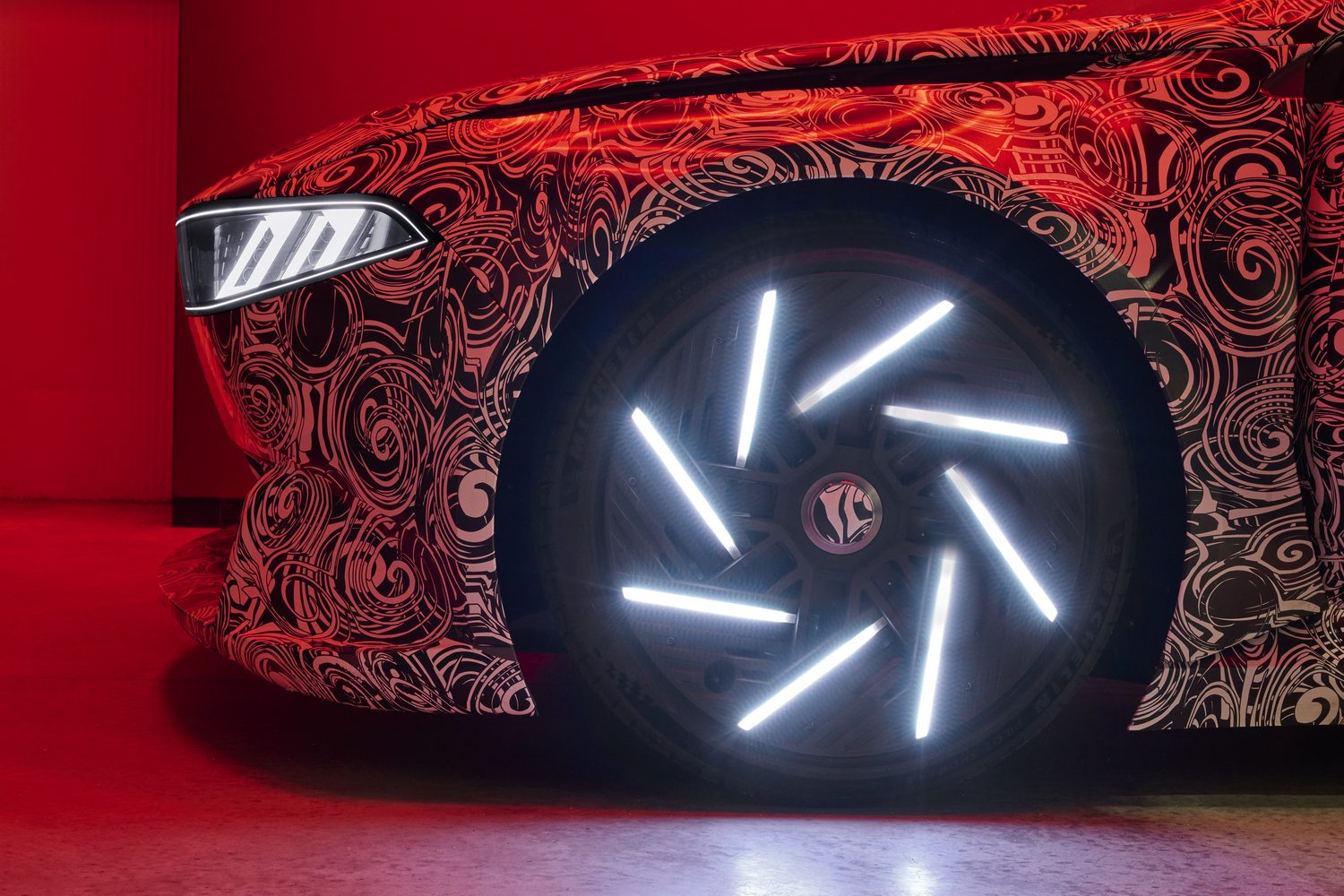
It’s important to note that what you see in front of you is not quite a full production car. BMW refers to it as a prototype high-performance test car. Even so it’s quite likely giving us a look at how the next-generation of electric M-badged models could look. Doubtless, there are also large hints here for the styling of the standard Neue Klasse saloon, which will be preceded in production next year by the new iX3 SUV, based on the same platform.
The prototype of the new car is still wearing its swirly-patterned camouflage, but some of the covers have been stripped away to reveal more styling details. Those include a new take on the classic BMW four-headlight look, with small off-square LED units replacing the 1980s-style round halogen lights.
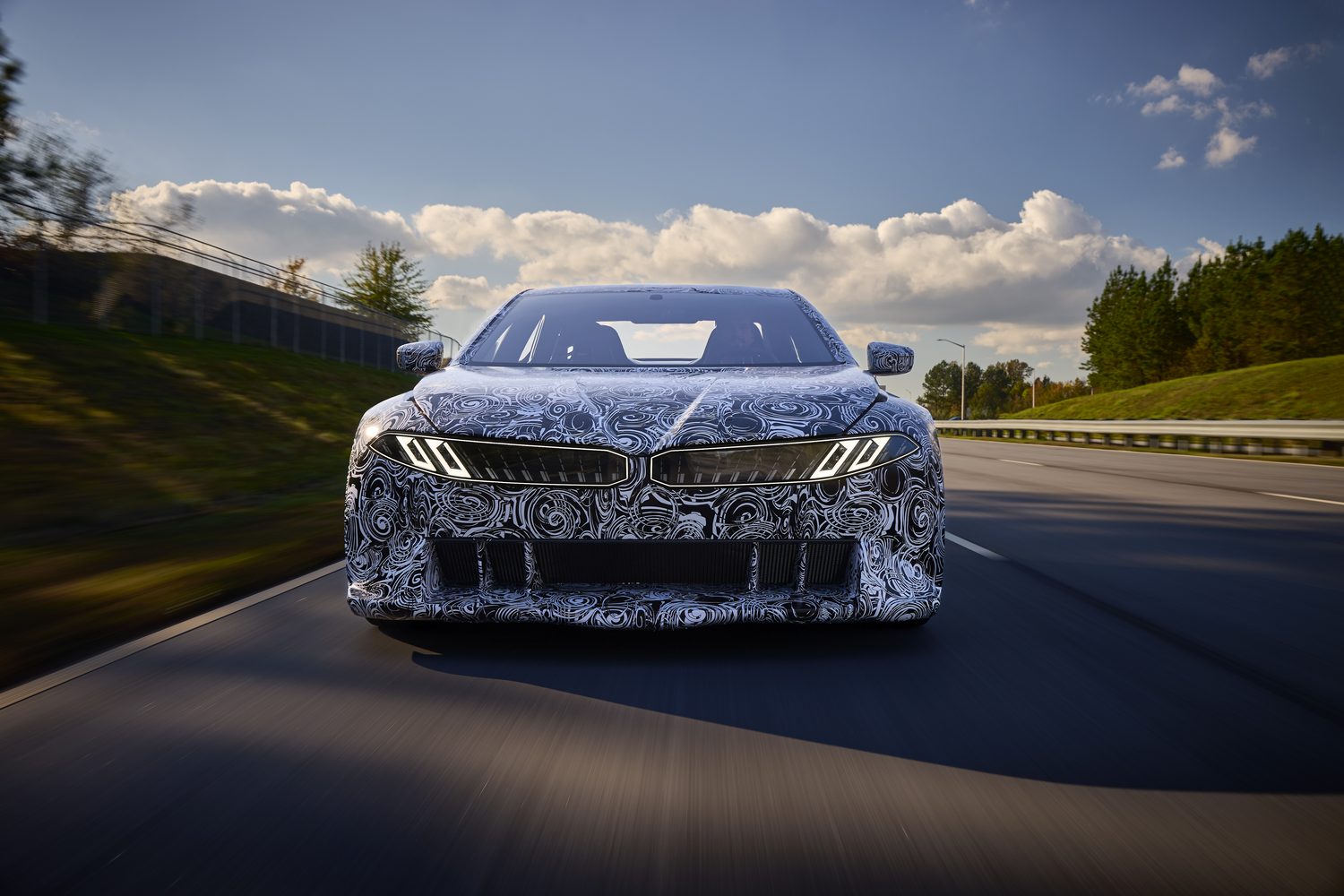
We can also see now the vanes in the radiator grille, which are sharply angled and have something of the look of the blades of a jet engine’s fan - BMW has, in the past, also been a builder of aircraft engines of course.
M styling under the camo
Then there is the deep front bumper with its four air blades, and the bulky side sills which give the Neue Klasse a dramatic, low-slung look. This is all topped off by dark-finished aero-look alloy wheels with bright highlights that appear to glow in different colours according to what the car is up to - acceleration is indicated in green, energy recuperation in blue and braking using the friction brakes in orange.
The rear lights and tail sweep up into almost a duck-tail spoiler. The aggressive body styling is far more overtly sporting than the Neue Klasse design studies we’ve seen so far, and almost certainly hints at M-badging underneath.

While we take in the styling, BMW is hard at work developing the Neue Klasse’s complex electronic control system, which is divided into four sections, half of which deals with automated driving aids, the other of which controls the batteries, motors and driving systems. BMW calls this setup the ‘Heart Of Joy.’
BMW reckons that the Heart Of Joy can process information ten times faster than conventional current computer control setups, and the whole thing has been designed and engineered in-house in Munich. The system apparently only takes mere milliseconds to intake, respond and react to what the driver is doing and what the road is like, far faster than conventional rivals.
BMW claims that: “The driver and passengers here experience a harmonious and noiseless driving feeling - regardless of the situation and speed they are travelling at. In dynamic driving scenarios, the new Heart of Joy / BMW Dynamic Performance Control combination serves up cornering poise and assurance beyond compare.”
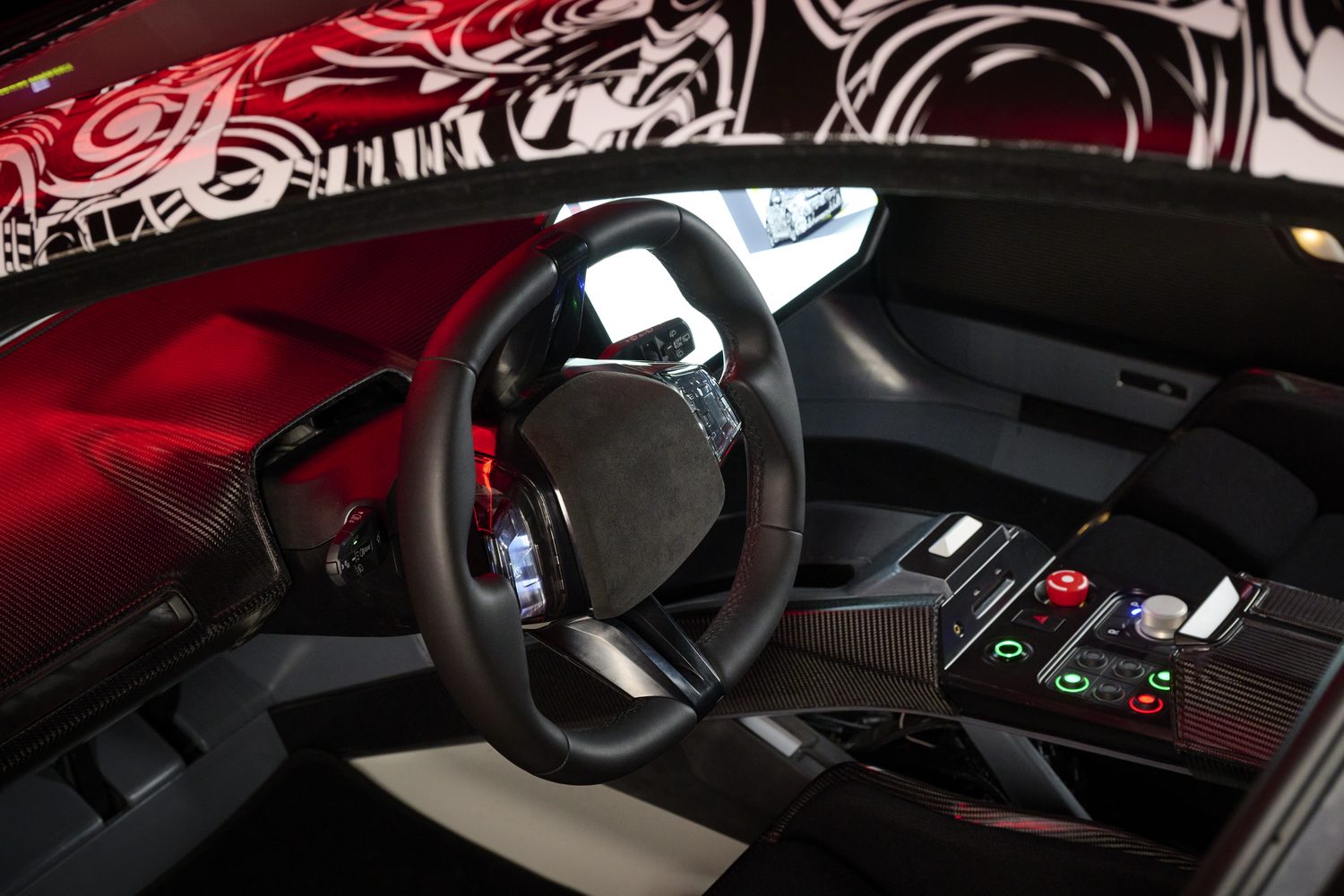
Massively overpowered
The company further claims that four individual electric motors of this prototype car can generate an enormous 18,000Nm of torque at the wheels. That’s enough to not only seriously test the Heart Of Joy (and indeed the tyres) but it also almost certainly means that the bones of the all-electric next-generation M3 are under there.
Why test with so much grunt? Simple - if it can cope with this, it can cope with anything. “The reasoning behind this is that if the control system can deal with an explosion of power of this magnitude, it will be able to handle the demands of everyday driving with ease,” said BMW. That 18,000Nm figure is measured at the wheel, though, not at the motor - which is where you’d normally measure the official torque rating, so don’t expect that to be a final production number.
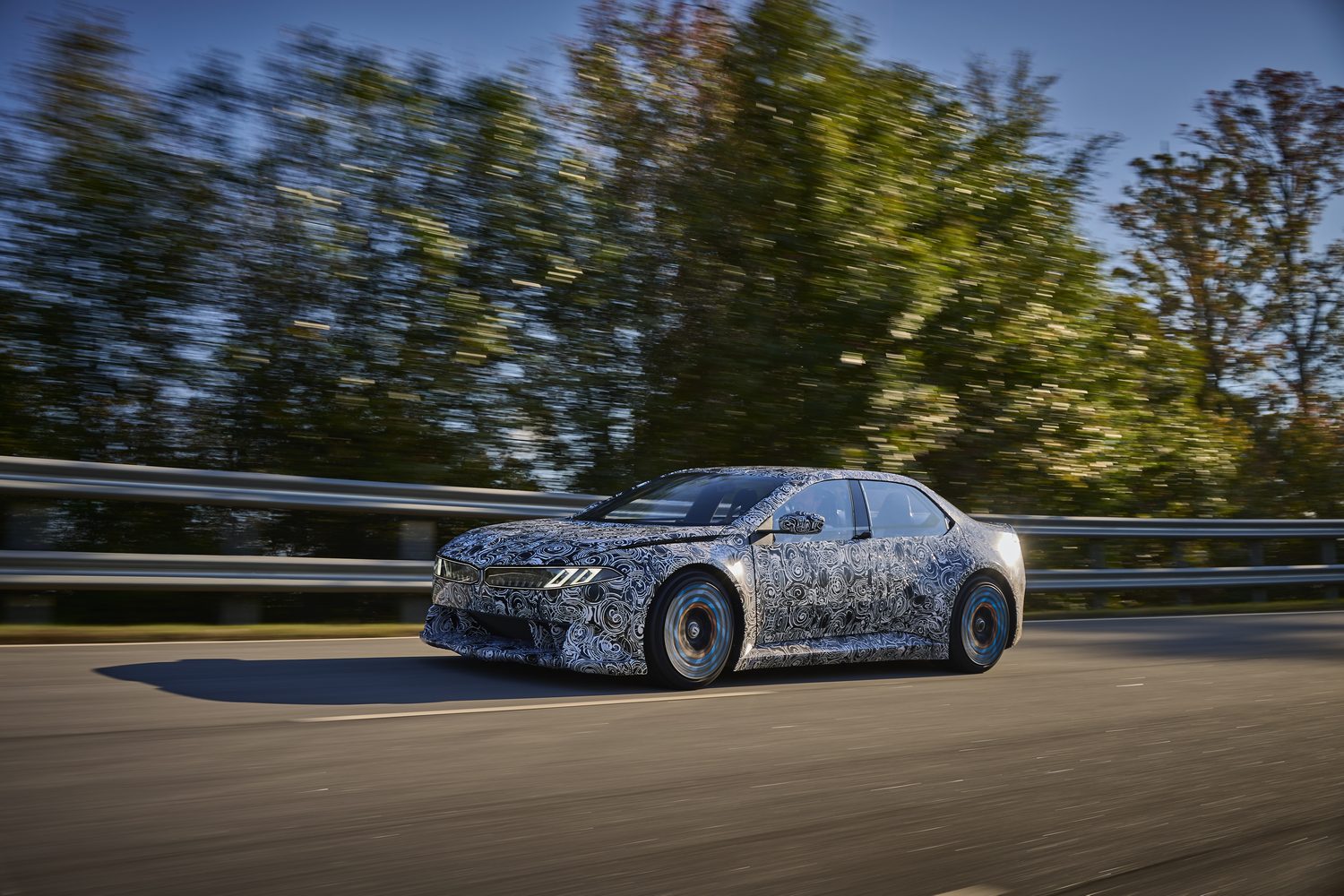
BMW has now confirmed that the test mule has five - yes, five - fans which, rather like the McMurtry Spéirling single-seat track car, suck it to the ground developing frankly insane amounts of downforce even from standstill. How likely is it that such a system will make production? Well, BMW’s M division has been talking up some frankly silly potential capability for the electric M3, so it’s not impossible.
Significantly for the efficiency of eventual production models, the full integration of all the electronic controls means that the Neue Klasse can be far more efficient. BMW says that: “The integrated drivetrain, braking and energy recuperation control allows energy to be used more sustainably. 98 per cent of drivers do not need to make any inputs using the conventional brakes. The braking power generated using energy recuperation is sufficient for normal, everyday driving. Only under heavy braking, e.g. in an emergency situation, is intervention required from the friction brakes.”
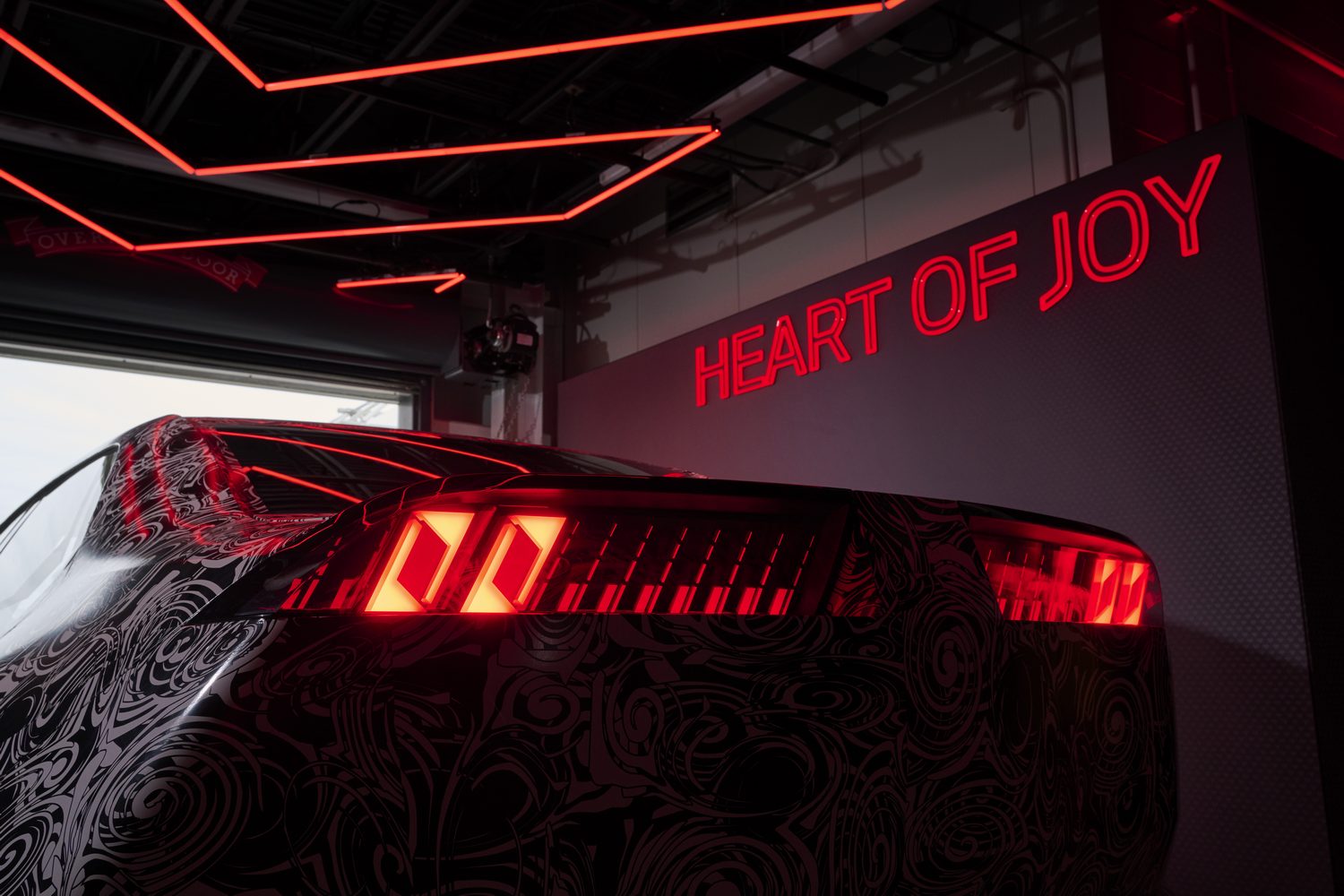
BMW will show off more about the Neue Klasse and the Heart Of Joy at the upcoming Shanghai motor show.
“The Heart of Joy enables us to take driving pleasure not just to the next level, but another one beyond that,” says Frank Weber, BMW’s head of development. “In addition, we are further increasing efficiency, and therefore boosting range, as in future the driver will brake almost exclusively using energy regeneration. This is Efficient Dynamics squared.”














